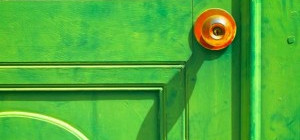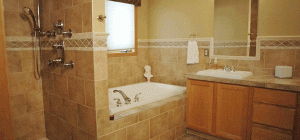Wood flooring can be a timeless addition to any style of home. Whether you live in a cosy country cottage, a humble family home, or an affluent city abode, solid wood is a wise investment. Each board promises to improve the dynamic of your living space with decorative flair and unparalleled durability. Delivering a perfect balance of form and function, you can rest assured that your flooring will last a lifetime, and look great in the process.
However, in order to ensure the longevity of your wood, a small amount of maintenance is required from time to time. Many homeowners make the mistake of overlooking the upkeep of their flooring, which can lead to feelings of disappointment further down the line. Don’t get caught out! With minimal care and attention, your real wood flooring will stay in pristine condition for the duration of its life.
Need a helping hand? Check out our 5 key maintenance tips below, and restore your real wood to its former glory.
Cleaning
This may seem like a basic undertaking, but you’d be surprised at how many homeowners don’t clean their flooring in the correct manner. Proper cleaning can make the difference between a dull finish and an elegant feature, so make sure you’re doing everything you can to keep your flooring spic and span. Start with a daily sweep or vacuum, taking care to use a soft brush to prevent scratching. For tougher build-ups of grime, apply a Ph. neutral cleaner, specifically manufactured for solid wood. Do not clean using excess water, as moisture can alter the structural integrity of the board. Coat a microfiber cloth in the cleaning solution, and gently wipe the affected areas. Dry once finished for best results.
Stain Removal
Unfortunately, accidents may occur on the surface of your real wood flooring. Whilst it’s perfectly natural to feel despair if you’ve stained your flooring, there are several methods you can employ to rectify any damages. One of the most common chemicals used for stain removal is hydrogen peroxide, proving cheap and easy to acquire. Make sure to keep some in your home at all times so you can react quickly, preventing the stain from absorbing deeper into the grain. Soak a cloth with the hydrogen peroxide and place over the affected area. Leave for a minimum of 6 hours, and dry any excess moisture left on the surface. If the stain is still slightly visible, repeat the process, this time leaving the cloth for 12 hours. With any luck, your flooring will be back to normal.
Sanding
One of the biggest advantages of real wood flooring is their ability to be sanded. This completely removes the need for reinstallation by pacifying serious damages that occur on the surface of your boards. Typically, hardwoods won’t need sanding for up to 10 years, so you should be in the clear for quite some time. With minimal equipment, the procedure can be finished in merely a few hours, restoring your boards to their former glory time and time again. Whilst this is a relatively simple procedure, make sure you’re properly acquainted with the right techniques before you perform this yourself. Sometimes, a professional is required for effective completion, however many DIY enthusiasts achieve great results with little effort. Either way, you’re going to be astounded by the transformation!
Refinishing
If you’ve decided to sand your flooring, you are going to have to apply a finish before it’s ready for foot traffic. There are a number of finishes available, all with different aesthetic properties, but each one has a primary function of providing protection to the surface of your boards. Whether you choose oil or lacquer, your flooring will be coated in a sealant that helps to prevent future damages such as scratches and spillages. Once your floor has been cleaned with methylated spirit, apply the finish with a paintbrush, following manufacturer’s instructions. Working along the grain, evenly cover your boards in the finish and wait for it to dry. Repeat the process until your desired effect has been achieved. Simple!
Preventing Future Damages
Although rectifying harm rarely proves difficult, it’s true that prevention is better than cure. There are plenty of easy and cost-effectivemethods of reducing daily wear and tear, saving you time and money further down the line. Something as simple as floor protecting furniture pads can pacify damages from chairs and tables, and placing rugs in high traffic areas such as hallways can create a barrier between the real wood and the sole of your shoes.





![Are You a Secret Hoarder? [Infographic]](https://lerablog.org/wp-content/plugins/wp-thumbie/timthumb.php?src=http://lerablog.org/wp-content/uploads/2014/11/Nation-of-Clutter-IG-v21.png&w=300&h=140&zc=1)


